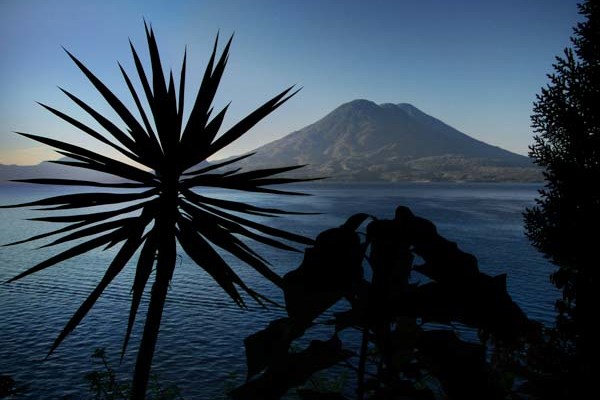A note from Greg: I’ve always wanted to go to Uganda – and have always dreamed of going on a safari there. While I keep dreaming, my friend Belinda has written in with this week’s post about that very subject. Take it away, Belinda …
Having paid a fortune to gorilla trekking, the question on your mind would be, “What are my chances of meeting mountain gorilla on my trek tomorrow?” Worry no more, all has been set for by a team behind the scenes and so the question would rather be, “will I be fit enough for the long trek tomorrow?”
Why missing out on Gorillas is not an option
Mountain gorillas have earned the government of Uganda a great financial relieve, losing a small percentage of tourists annually just in the name of missing out on an encounter with gorillas would translate to a hundred, a thousand or who knows, a million more tourists putting gorilla trekking off their bucket list. Massive investments have therefore been made to meet full tourist satisfaction, not only to infrastructures, Hotels or Lodges but also to ensure tourists get to see gorillas in Bwindi National Parks. So why do I confidently stand to say missing out on Gorillas is just something that shouldn’t take sleep off your eyes:
- Thank the team behind scenes
A technical team of gorilla trackers well equipped with satellite phones and GPS devices, before day wake up knock on your door, “Hey it’s time for the jungle!”, these teams head to the National Parks to track the whereabouts of Gorilla families, who usually don’t move more than a kilometer or two a day from their previous day location. These trackers then contact the headquarters to give updates of Gorilla movements within the parks. So as day breaks, you the tourist and tour guides will simply be following instructions from the trackers to different gorilla families. This organized Uganda gorilla safaris has greatly increased the chances of a tourist to get to meet gorillas each day of trekking by more than 95%.
- All for the challenge
So why should I say, “All for the challenge”, a provision for the disabled have been put in place, a 16 porter, four-point seatbelt and a rally fitted sedan chair is right in place if need arises. Chances of getting to see mountain gorilla has also been enhanced greatly by the sense of wise gorilla family allocation that enables every category of tourists to be able to access these primates based on the level of fitness. The weak and disabled are mostly allocated to near gorilla families stationed not far deep into the parks and also for those who are strong and fit enough to hike longer and further distances. Further still, technical advice is given to tourists by their tour operators who advise them on what to include for a successful gorilla safari in Bwindi including exercises as the hike to the gorillas tend to be strenuous at times when one is not used to long walks. This enables preparations to start as early as 3 to 6 months in advance. Tourists are also encouraged to go along with porters who are helpful when it comes to slippery and muddy hikes.
- Habituated Gorilla Families
Mountain gorilla families go through habituation for at least two years by a team of specialist. A successful habituation process would then mean that Gorillas get used to people and that their chances of running away from people are reduced and therefore this greatly increases their chances to be seen. Numbers keep striking high, with Bwindi currently having 13 fully habituated Gorilla families within the Ruhija, Rushaga, Buhoma, and the Nkuringo regions with the later lining up the Bushaho Gorilla family for habituation process.
- It worth a good timing
High season of mountain gorilla trekking also increase the chances of seeing mountain gorillas. This season is characterized by warm weathered conditions and is considered to be the best time for mountain gorilla trekking and are in the months of January to February, June to September and then December that experience little or no rains at all. This makes roads accessing to the park easy. Further still, mountain gorillas live in temperate weathered conditions that make them settle further in a location.
- Exceptional
Despite the fact that mountain gorilla trekking has a 99.9% success rate, chances for one to see mountain gorillas are reduced to zero for reasons such as illness like cold, cough. This is so because permits are restricted for this category of people as mountain gorillas are much vulnerable to human transmitted diseases. On realization, a non compensated U-turn is effected.
To account for the 0.1% of missing out, rarely indeed, a 50% refund is made to your trekking ticket, otherwise, chances are so high that you will get to see mountain gorillas in a single trek.
A feel of a typical Gorilla trekking day
It’s no longer a ground shaking “breaking news” of how Gorilla trekking has turned to become one of the most preferred tour safari activity that each time feel like it’s the first time and still keeping you marking yet another memorable day on your calendar every year that passes by, this could just be why!!
- The day of gorilla trekking
Stayed awake all night of nervous anticipation in amidst the jungle wave roaring winds flapping to the jungle tree leaves and cracking across the branches besides that cabin like lodge, taking you back to the countryside home, and it’s barely 6:30 am in the morning before you hear a door breaking knock against that Mahogany door, Courtesy of African design, “Hello!, we got to get going”. With no hesitation, you are off to the showers, on full trek gear, waiting on for a body warming mug of steaming hot coffee, a backpack of packed lunch, Deet insect repellants, water, hat on head, walking stick at hand, off you dash for the door.
At the headquarters, a simple health inspection of any signs of cold or rather cough, permit checked, Gorilla group allocation, YES!, then a white paper of Gorilla trek instructions are flashed right before you for an orientation through the process. Together with a few trackers, guides and rangers, in a short drive, you are off to the trekking start point of the park.
- Hire a porter
It’s a common thing to expect each tracker, over the past few months to have deliberately gone through the army cadet training to get themselves fit for the jungle challenge, and heads high you want to go straight for the trek forgetting the pothole hilly and slippery terrain through the thick vines will get you time to time bum wet on the ground. So why then will it be so hard to trust the people of the ground, the porters? Just at $15 to $20, energetic and fit enough, these will give you a hand through the jungle with ease as well as pilling the backpack load on their backs.
- The trekking
Excitement starts at the very point you start snaking your way through the jungles hearing a million whistles of birds up skies and antelope or Buffalo tracks underneath leading you to bird-like Gorilla nests, food remains and knuckle prints drawing you closer to dream realizing moment you have long waited for, and suddenly you hear a brush through the jungles bushes and eventually there lies the dark-haired jaw drop, sunken eye human-like giant, and this marks the beginning of your one hour of a live to remember moment.
- The encounter
How lovely would it be to watch the silverback exert as much dominance of gentleness, or lying there pleasantly watching the full of life energetic young stars try to beat their chests in imitation or chasing after the juveniles or clinching and jumping from branch to branch, getting the mothers in constant fear of a grip misjudgment, and later slowly leading the troop to a new safety sight to nest for the night.
What a way will it be to end a great holiday package with a realized dream of Gorilla trekking made a success, and thanks to the great work done by the pre-technical trackers, the rangers and the ever-charming guides who have done a great work making a perfect holiday for you.
EXPLORE SOMEWHERE NEW
BUY A PRINT
All photos on this site are available as limited edition fine art photographic prints. Please get in touch for sizes and rates.









